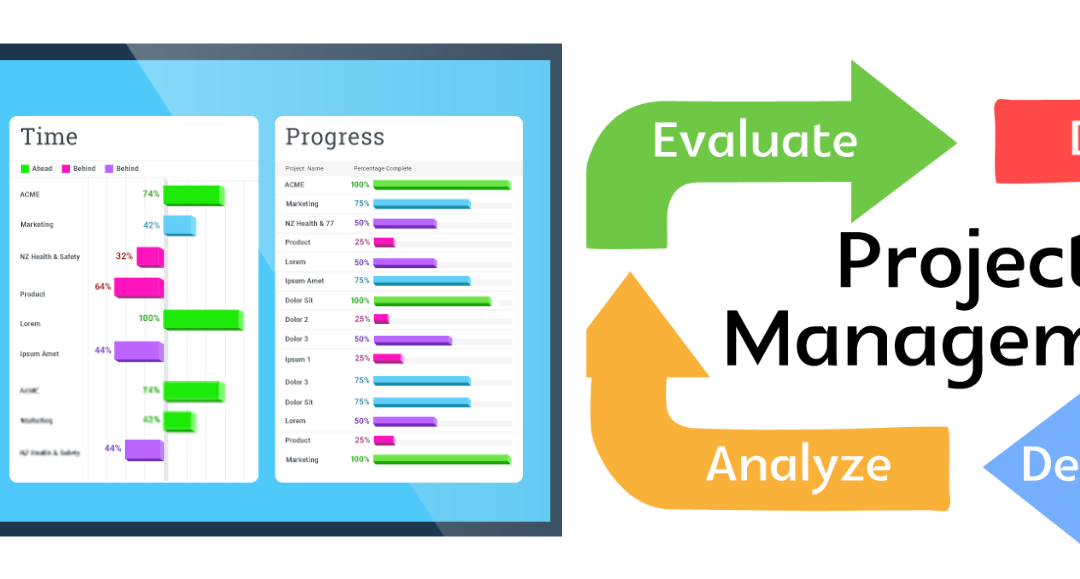
by ObiTechie's Team | Jun 22, 2023 | ERP Software, Project Planning
Successful project management can play a paramount role in business success. Project management software can generate extra revenue and reduce costs through more Productivity. In the rapidly changing business environment, maximizing efficiency is no longer a goal but a necessity. As a result of the urgent need to align business processes and effectively collaborate, Project Management Software became a valuable tool. This article will discuss how project management software can dramatically improve team productivity.
The Pillar of Modern Teamwork: Project Management Software
To begin with, what is project management software? It refers to a tool or digital platform that individuals or businesses use to plan their projects and allocate and track different resources. Besides, the tool helps schedule project timelines and tasks, assign tasks, track progress, capture and implement ideas and knowledge, and support collaboration between team members to execute a project. Further, the software helps companies stay organized through organizational features, document storage, and search.
Key Features that Drive Productivity
Task management
One of the most powerful functions of Project Management Software is its ability to support task allocation seamlessly. Assigning specific tasks to specific team members helps ensure accountability and track progress. In addition, delegation and reassignment of duties and responsibilities become more manageable based on real-time availability and workload.
Time Tracking and Scheduling
Time is a critical resource that any business would want to maximize adequately. It’s essential to understand how you spend most of your time. With appropriate time-tracking software, team members can estimate the time required to complete a task, log hours spent, and monitor timelines. As a result, it becomes easier to monitor schedules accurately.
Collaboration and communication tools
In any project, uninterrupted communication is critical. Integrated communication tools like chat and file sharing are vital to information exchange. On the other hand, collaboration features allow members to work together effectively, regardless of their physical location.
Resource Allocation and Budget Management
You must manage all your resources to keep projects on schedule and within budget. Project Management Software provides efficient tools for allocating resources, ensuring optimal utilization of both human and material resources.
Real-life scenarios: Transforming Productivity
Avoiding overloads and bottlenecks
Did you know that having a clear outline of every member’s workload can help you avoid overloading some members? By utilizing Project Management Software, you can effectively decrease bottlenecks and ensure that tasks are distributed evenly among team members.
Real-time progress tracking
Project Management Software tracks project progress in real-time, allowing quick decision-making. Teams can quickly fine-tune plans and reallocate resources whenever a roadblock arises.
Improving Client Relations
Keeping clients informed about every project’s progress is always appreciated. With Project Management Software, you can keep your customers in the loop, leading to better, lasting relationships.
Choosing the Right Software
Consider your business and team’s needs when investing in Project Management Software. Look for software that perfectly suits your needs, with customization options, and integrates perfectly with your team’s tools.
The Future of Productivity with Project Management Software
As technology evolves every day, so does Project Management Software evolve. Most systems nowadays incorporate machine learning, also known as artificial intelligence, into their operations. These enhancements have significantly increased the software’s effectiveness, resulting in more efficient planning capabilities.
Wrapping Up
In conclusion, Project Management Software is a requisite in the current business world. With excellent features such as time tracking, task management, and collaboration tools, the software maximizes efficiency and improves team productivity. All you need to do is make an informed decision rather than picking any software on the market. Select a tool that aligns with your team’s needs to pave the way for uninterrupted processes and successful project execution and completion.
Article Sources
https://www.investopedia.com/terms/p/project-management.asp
The impact of Project Management Software on Team Productivity (tribalvision.com)
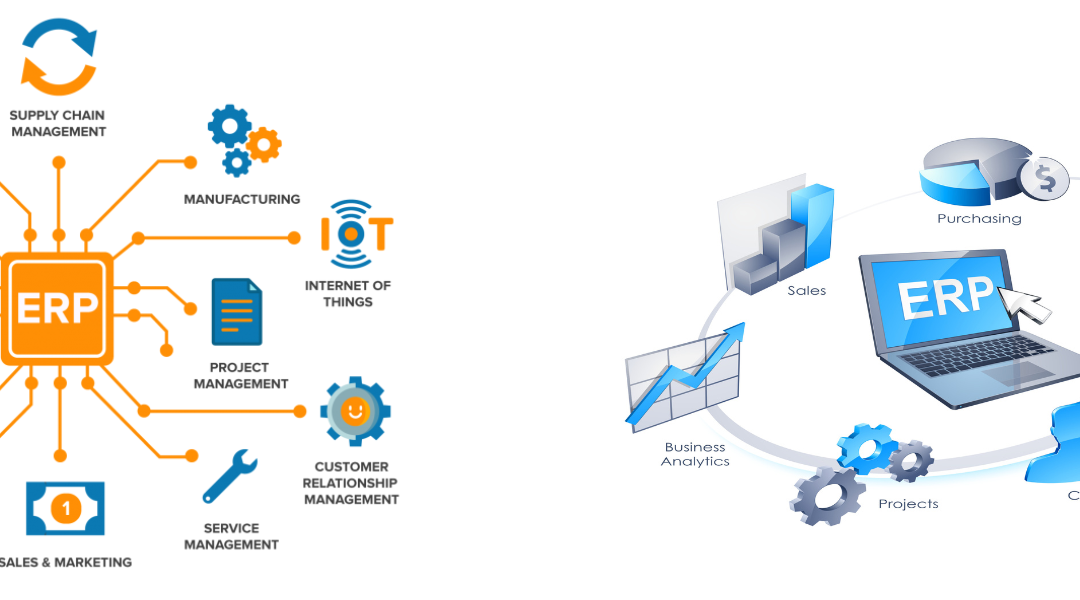
by ObiTechie's Team | Jun 14, 2023 | ERP Software
In today’s ever-changing business environment, businesses constantly strive to streamline daily operations and enhance productivity. Enterprise Resource Planning (ERP) software is now an excellent choice for meeting these business objectives. The software is a robust solution for small, midsized, and large businesses. In this article, we shall look at the details of the ERP software solution and its primary aspects.
Understanding ERP Software
Businesses rely on Enterprise Resource Planning (ERP) software to streamline and unite various processes. ERP software is versatile across multiple departments, including procurement, finance, manufacturing, supply chain, human resources, and service. It consolidates all these functions into a single system, promoting efficient information flow and eliminating information silos within the enterprise.
Critical Components of ERP Software
ERP system is not a single application. Instead, it consists of several integrated modules, each focusing on a different business area. Below, you will find a list of the specific components.
Financial management
The unit handles every transaction and financial record, including accounts payable, general ledger, accounts receivable, asset management, and budgeting. The financial management unit provides comprehensive financial reporting and helps with regulatory compliance.
Human Resources Management
The HR module aligns different HR tasks such as recruiting, onboarding, payroll, employee records management, benefits administration, and performance tracking. The human resources management unit helps HR staff concentrate more on strategic areas like employee engagement and retention.
Supply chain management
The segment helps the business manage procurement, inventory, and logistics processes effectively. Besides, the unit helps monitor demand and supply balances, align purchasing, manage vendors, and control inventory costs.
Manufacturing/Production
The manufacturing manages various production processes, scheduling, work orders, bills of materials, and quality control. It ensures that manufacturing processes match the company’s goals.
Customer Relationship Management (CRM)
Although only sometimes included in ERP systems, CRM segments manage sales processes, customer data, leads, customer service, and marketing activities. The unit helps the business attract more customers and convert potential customers into active customers through marketing and information management.
ERP Software Benefits
ERP software benefits businesses in various ways. Here are the primary benefits that can significantly improve your business.
Improved efficiency
ERP systems reduce repetitive and manual tasks by automating and streamlining business processes, increasing operational efficiency and productivity.
Real-time information
ERP systems provide real-time, accurate information. With honest, timely information, businesses can make evidence-based decisions that help company growth. In addition, factual and timely information offers a holistic view of business operations, ensuring everything aligns with the plan.
Enhancing collaboration
ERP systems centralize data in one location, promoting cross-departmental collaboration. ERP software ensures departments access the same and up-to-date data, breaking down information silos. The software helps increase productivity since all departments can access the same data simultaneously without waiting for distribution.
Scalability
ERP systems are scalable and flexible. They can support businesses as they grow and evolve. The software will still accommodate changes when the company succeeds, so business owners don’t have to worry about what will happen.
Cost savings
In the long run, ERP systems can save significant costs. The software will help businesses achieve their goals through improved revenue.
The Future of ERP Software: Embracing New Technologies
Enterprise Resource Planning evolves with technology. Modern ERP systems integrate artificial intelligence, the Internet of Things, and machine learning to enhance their functions. Artificial intelligence automates repetitive tasks, enhances user interactions, and provides predictive analytics for ERP systems. On the other hand, IoT in ERPs can help businesses improve data collection by providing accurate insights into supply chain management and customer behavior.
Article Source:
What Is Enterprise Resource Planning (ERP)?—Microsoft Dynamics 365
Enterprise Resource Planning (ERP): Meaning, Components, and Examples (investopedia.com)
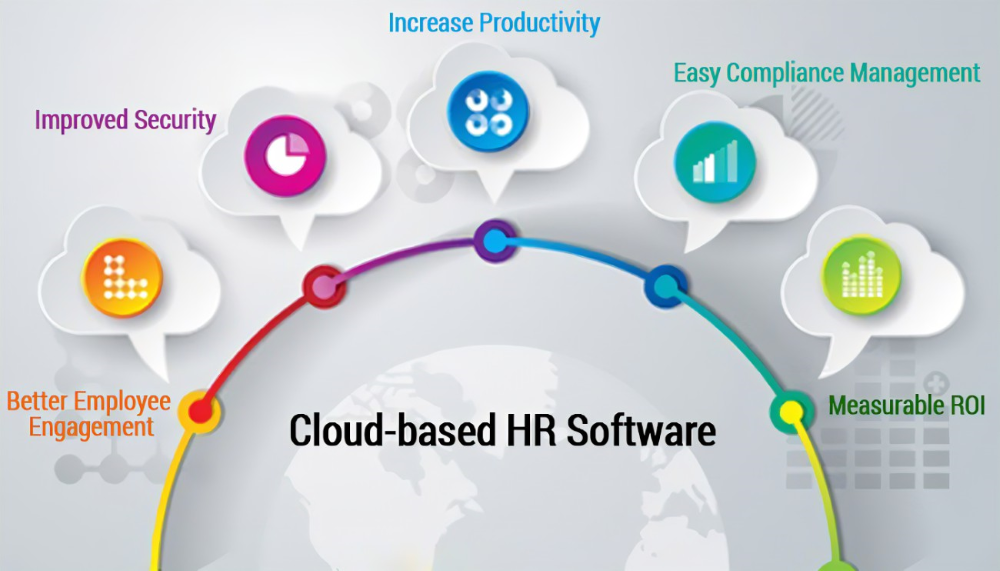
by ObiTechie's Team | Jun 3, 2023 | ERP Software, HR
As the head of the human resources department in your organization, you have many responsibilities to manage simultaneously. Utilizing one of the highest-rated HR software options can streamline your work and personal life.
If you’re evaluating HR software options and still need to decide which one to choose, it’s crucial to consider the potential cost and time savings the software can provide for your organization. Look for comprehensive software that can easily handle routine tasks like payroll calculations and sending onboarding emails.
Understanding the Need for HR Software in Small Businesses
Before we can look at each software, we need to evaluate an important question: why do small businesses need HR software? Primarily, HR software helps eliminate repetitive tasks and procedures, eliminates repetitive HR procedures, and helps the company comply with labor laws and regulations on time. HR software aims to enhance efficiency and assist businesses in saving time by prioritizing strategic tasks.
Top HR Software Solutions for Small Businesses:
Bamboo HR this HR software is an all-inclusive solution designed to care for all the needs of medium and small-sized businesses. It provides a comprehensive HR functionality, an intuitive interface, and advanced reporting capabilities that help in saving time.
Features:
- Applicant Tracking System (ATS): This system streamlines the recruiting process by tracking applicants and automating job postings. Job postings are timely, and the system can track the number of applicants expressing interest and their qualifications.
- Onboarding Tools: The tools ensure the uninterrupted transition for new employees, improving their initial experience
- Time-off Management: This function helps track employee leave, reducing human errors.
- Performance management: The solution provides a platform for performance evaluations and consistent employee feedback
Benefits:
- Assists in enhancing the quality and efficiency of employee recruitment.
- Enhance the experience of onboarding new employees.
- Simplifies performance appraisal and leave management processes
Zenefits is a cloud-based solution. The software provides centralized HR processes. Besides, the solution offers a robust HR platform that caters to the different needs of small businesses.
Features:
- Payroll Management: The software offers automatic salary calculations, tax deductions, and benefits, reducing the chances of human error
- Benefits Administration: Also, the software aligns the process of managing each employee’s benefits, such as their health insurance and retirement plans
- Time and Attendance: Also, tracks employee working schedules and overtime hours, ensuring payroll accuracy
- Compliance: The software helps businesses stay compliant with labor laws and regulations
Benefits:
- Helps in streamlining the issuance of benefits and payroll administration
- The software is accurate in tracking attendance
- Ensures regulatory compliance, reducing the chances of legal issues
Gusto is primarily designed to assist small businesses. The software has user-friendly hiring, payroll platforms, and benefits administration tools that are effective and efficient.
Features:
- Full-service Payroll: The software automates payroll calculations, filings, and tax payments
- Health Benefits: It offers some health benefit options and manages enrollment processes
- Hiring and Onboarding: Provides practical tools for job postings, background checks, and digital onboarding
Benefits:
- The software simplifies payroll operations and ensures tax compliance
- It provides flexible benefits options to attract and retain talent
- It streamlines the hiring and onboarding process, improving new employees’ experience
Workday has robust and comprehensive HR functions that cover time tracking, payroll, and talent management. The software also provides unified applications developed for human capital and strategic financial management.
Features:
- Talent Management: This great feature helps businesses to recruit, onboard, and retain top talent effectively, creating succession plans and developing leadership within the organization. The feature also saves the time and resources required for repetitive recruitment processes.
- Human Capital Management (HCM): With Workday’s HCM solution, businesses can effectively manage the entire employee lifecycle, from hiring and onboarding to compensation, benefits, and performance management
- Payroll and Time Tracking: Workday’s payroll system handles complex and specific payroll calculations. Its time-tracking feature accurately tracks employees’ working hours and other related records.
- Workforce planning and Analytics: This feature offers insights and predictions that help businesses make sound data-driven decisions about their workforce
Benefits:
- The software offers streamlined recruitment, onboarding, and talent retention processes, enhancing employee quality and reducing turnover.
- It improves management of the entire employee lifecycle, fostering an engaged and motivated workforce.
- It provides an automated payroll and time-tracking function that reduces errors and ensures proper employee compensation.
- It provides insights and predictions from workforce planning and analytics, which aid strategic decision-making and future planning.
SAP SuccessFactors is among the most trusted and leading HR software that offers several services that cover the entire employee lifecycle. The software is known for its comprehensive applications that best fit small businesses.
Features:
- Employee Experience Management: This software allows businesses to collect timely employee feedback, analyze it, and make sound decisions from those insights
- Performance and Goals: This feature helps match employee activities with organizational goals. Besides, it aids in continuous performance management.
- Recruiting and Onboarding: SAP SuccessFactors’ recruiting feature simplifies the hiring process. In addition, its onboarding tool makes the transition process for new employees seamless.
- Learning and Development: This feature offers learning management systems, collaboration tools, and skill-building programs to help employee growth and development
Benefits:
- SAP SuccessFactors provides an enhanced understanding of the employee experience, leading to improved engagement and productivity
- The software supports the alignment of performance with organizational goals, ensuring everyone is working towards the same vision.
- The solution provides streamlined recruitment and onboarding processes that improve the quality of employees and the initial experience of new employees.
- The software fosters continuous learning and development, promoting a skilled and adaptable workforce ready for future challenges.
Selecting the Right HR Software
When considering HR software for your business, it’s important to take into account various factors before making a decision. Your budget, specific business needs, and plans for long-term growth should all be carefully considered.
Implementing HR software for your business comes with several benefits. The solution helps enhance HR efficiency, contributes to strategic decision-making processes, creates an engaged workforce, and creates sustainable business growth. If you’re considering implementing HR software, it’s a worthwhile investment for your small business. It can give you a competitive edge in the market and help you maintain efficiency and effectiveness in the business environment. Don’t hesitate to move forward with it.
Article Sources
A Complete Guide to Small Business HR Software: Features, Benefits, and Best Options ‣ Crocodile® HR Software
7 HR software tools ideal for small business – Small Business UK
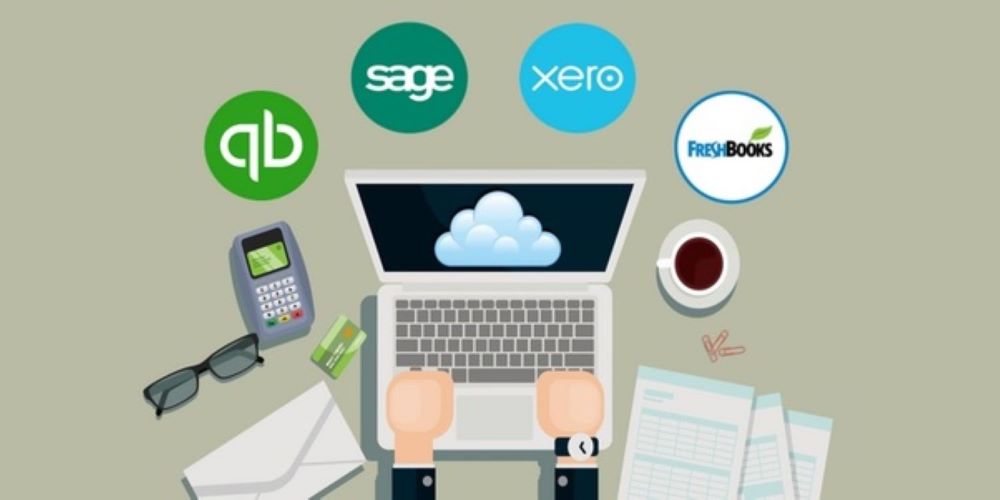
by ObiTechie's Team | May 24, 2023 | ERP Software, FinTrack
The climate for start-up businesses is highly competitive. Several companies are competing for a better chunk of market share. However, it takes a truly outstanding business design to rise to the top. Unfortunately, you will be off the market if your accounting books are not in good shape. You will need much time to catch up with filing taxes, sending pitches to investors, or applying for business loans.
If you want your business to be more effective in its operations, faster, and more efficient, investing in cloud accounting software is an excellent investment. If your organization still uses desktop software or manual spreadsheets for accounting, it may be time to shift to cloud-based accounting software. Cloud-based software has tons of benefits compared to on-premise software. The solution allows workers to work at any time in any location, automates time-consuming manual tasks, improves compliance and accuracy, and accelerates financial processes with fewer efforts.
Popular Cloud-Based Accounting Software
Accounting software simplifies the bookkeeping process. The software helps businesses keep close tabs on finances and prepare for tax season, which is an easier way for small businesses and freelancers than employing a full-time consultant. Now there are cloud-based accounting solutions. This software uses remote servers to host data and secure sensitive financial information from criminals. Cloud-based software typically has a backup to the cloud to avoid losing any information stored in the server. The following are the most common cloud-based accounting software suitable for businesses:
QuickBooks Online: The software is one of the most flexible cloud-based accounting software. Intuit designed the software. QuickBooks Online offers various features such as invoicing, tracking expenses, and reporting, making it suitable for businesses of all sizes.
Xero: The software is hosted in New Zealand and is famous for its user-friendly interface that makes it easy to use. Besides, Xero has robust features, including detailed financial reports, inventory tracking, integration capabilities, and diverse business applications.
FreshBooks: The software is cloud-based, developed primarily for freelancers and small businesses. FreshBooks provides easy expense tracking, invoicing, and time tracking capabilities.
Sage Business Cloud Accounting: The software was previously known as Sage One. Sage Business Cloud Accounting is comprehensive, offering several accounting solutions such as invoicing, cash flow, and inventory management.
Zoho Books: A section of the Zoho suite business application is a cloud-based accounting solution offering time tracking, invoicing, banking reconciliation, and expense tracking, making it suitable for small and mid-sized businesses.
Wave: This cloud-based software is free. Wave software offers basic accounting features, including expense tracking, invoicing, and financial reporting, making it excellent for sole proprietors, freelancers, and small businesses.
NetSuite ERP: The software is scalable and comprehensive, offering advanced features, including revenue recognition management and financial planning, making it great for large businesses.
Melio: The cloud-based software is user-friendly and established to simplify business transactions. With Melio, small businesses can manage their accounts payable digitally, having features such as invoice management, data synchronization, and payment scheduling.
The Benefits of Cloud-Based Accounting Software
The following are the outstanding benefits of cloud-based accounting software;
Cloud Accounting: Elevating Accessibility
One of the highly recognized benefits of cloud-based accounting software is its accessibility. Unlike on-premise software, which requires physical access to a particular network or computer, you can access cloud-based software from any location, anytime. You only need internet connectivity to access your financial information regardless of where you work.
Moreover, cloud accounting software permits multi-user access. This function encourages collaboration between employees and other external partners, ensuring all team members have up-to-date and consistent information and eliminating misunderstandings and errors.
With time, your business will keep advancing, and so will your accounting needs. Fortunately, cloud-based accounting software fulfils these needs.
Unlike on-premise software, where you must invest in additional hardware or software licenses to accommodate the expansion, a flexible payment plan is all you need with cloud-based software. You can easily update your packages as the business grows and add users or downgrade when your business is in its slow season. The software allows you to pay for only what you need.
Your business may also expand across geographical borders. In that case, cloud accounting software will support multi-country operations while seamlessly supporting multi-currency transactions.
Scalability: Growing With Your Business
With time, your business will keep advancing, and so will your accounting needs. Fortunately, cloud-based accounting software fulfils these needs.
Unlike on-premise software, where you must invest in additional hardware or software licenses to accommodate the expansion, a flexible payment plan is all you need with cloud-based software. You can easily update your packages as the business grows and add users or downgrade when your business is in its slow season. The software allows you to pay for only what you need.
Your business may also expand across geographical borders. In that case, cloud accounting software will support multi-country operations while seamlessly supporting multi-currency transactions.
Cost-Effectiveness: Streamlining Your Finances
Cost-effectiveness is one of the most enticing benefits of cloud accounting software. As often stressed, the software operates on subscription plans making them affordable with little or no upfront costs. In addition, as the business expands, there will be no need for extra IT support; you will only update your subscription.
The Future of Accounting is in the Cloud
To sum it up, the benefits of cloud-based accounting software attractive to businesses are scalability, accessibility, and cost-effectiveness. The software enables immediate access to real-time financial information and caters to evolving business needs. The software helps you save both directly and indirectly.
If you are considering transitioning from traditional on-premise software, you are making the right decision. The process may seem daunting, but the long-term benefits are rewarding. Your business will be more efficient with the emerging trends and will surely stand the competition.
Article Sources
Best Cloud Accounting Software (May 2023) – Forbes Advisor
Accounting Software: Definition, Types, and Benefits (investopedia.com)
Message from FreshBooks
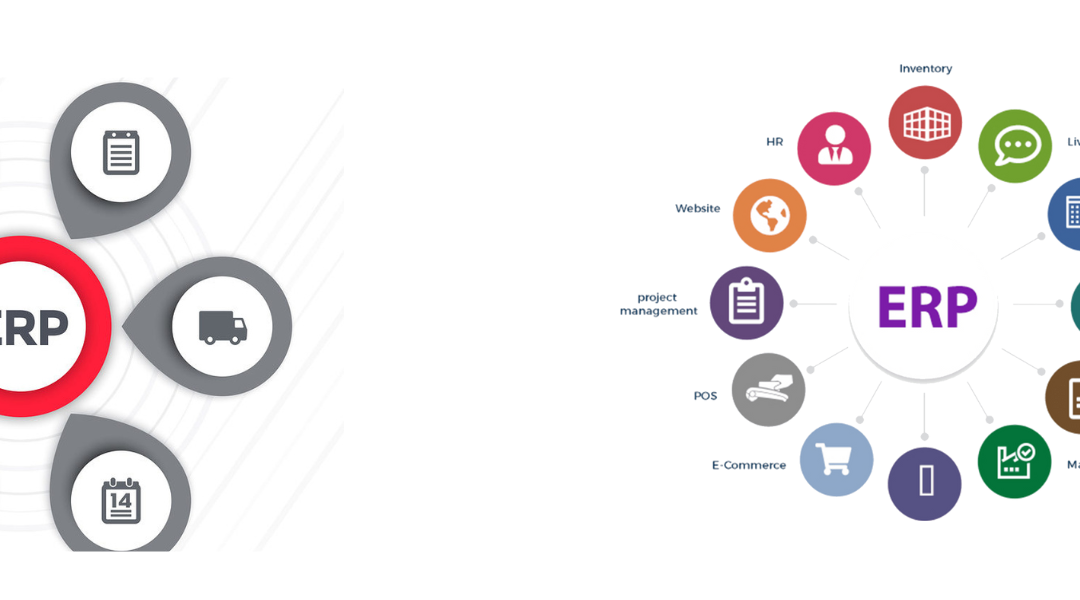
by ObiTechie's Team | Apr 19, 2023 | ERP Software
An ERP software system is among the most significant investments a company can make. It is confirmed to be a powerful solution that impacts all business areas, including manufacturing, human resources, marketing, accounting, and more.
Enterprise resource planning (ERP) has evolved to match most business operations, such as procurement, human resources, accounting, and manufacturing. In addition, the front office is also using modern processes like e-commerce, sales force automation (SFA), and marketing automation for operations.
Businesses rely on ERP solutions to cut costs by eliminating redundant processes and automating repetitive tasks. The system also helps companies access vital data for faster decision-making. As businesses adapt their operations to meet current market demands, software vendors must also adjust their products and services to meet these demands. ERP systems, in this situation, have evolved in the following ways.
It is one of the latest trends in ERP Systems. Businesses are rapidly migrating from on-premise ERP to on-cloud ERP systems. Cloud-based ERPs are helping organizations be more efficient and lower operational costs in human and material resources, resulting in increased revenue.
Integration with Other Applications
Modern ERP systems are essential to a business’s digital transformation, but are just one component of more enormous investments. Companies can improve their primary processes and enhance their order flows by integrating their ERP systems with other applications, such as e-commerce, leading to increased order fulfillment and revenue.
Mobile Access
Undoubtedly, traditional ERP systems have offered some support with mobile access. Nonetheless, the situation has rapidly changed. Mobile apps are now more popular, and developers are enhancing them more and more. ERP systems have evolved, allowing users to access vital data on the go. You can now access server-side and client-side tasks regardless of time and place.
Evolved mobile ERPs have fostered the collaboration of teams in different time zones and locations, resulting in more value and productivity.
AI and Machine Learning
Incorporating artificial intelligence and machine learning into modern ERP systems is helping businesses further enhance their processes and provide greater personalization; while only a few ERP solutions were combined with AI in the past, future trends indicate that most ERP systems will have machine learning and AI embedded. This transformation will enable businesses to enjoy more efficient processes and gain actionable insight.
Blockchain Technology
Integrating Blockchain technology into ERP software is pushing its benefits to a higher level. With Blockchain technology, ERP systems can create smart contracts and automate processes without the need for additional employees or legal departments. Blockchain technology also enables organizations to validate transactions and generate a secure data record shared among multiple nodes. Additionally, the technology can verify and authenticate identities and detect unauthorized attempts or other security challenges in real-time.
Real-time Data Analytics
Unlike past ERP systems, current systems have real-time data analytics features that enable businesses to make quick data-driven decisions. Integrating analytics and big data has created new revenue sources for cloud ERP suppliers and allowed enterprises to prioritize analytics-based solutions, improving their financial performance and enabling more effective execution of plans. Businesses can access real-time information and make decisions at all levels with integrated data visualization, ad-hoc reporting, and analytics capabilities.
Future of ERP Software
In the future, more businesses will likely turn to cloud ERP systems to gain the agility and speed they need to compete in the market. Companies already using cloud ERP systems will look for more ways to utilize the capabilities of the cloud, and organizations will seek ERP software that can support remote work. The demand for mobile ERP functionality will also likely increase to support workflow automation and remote training.
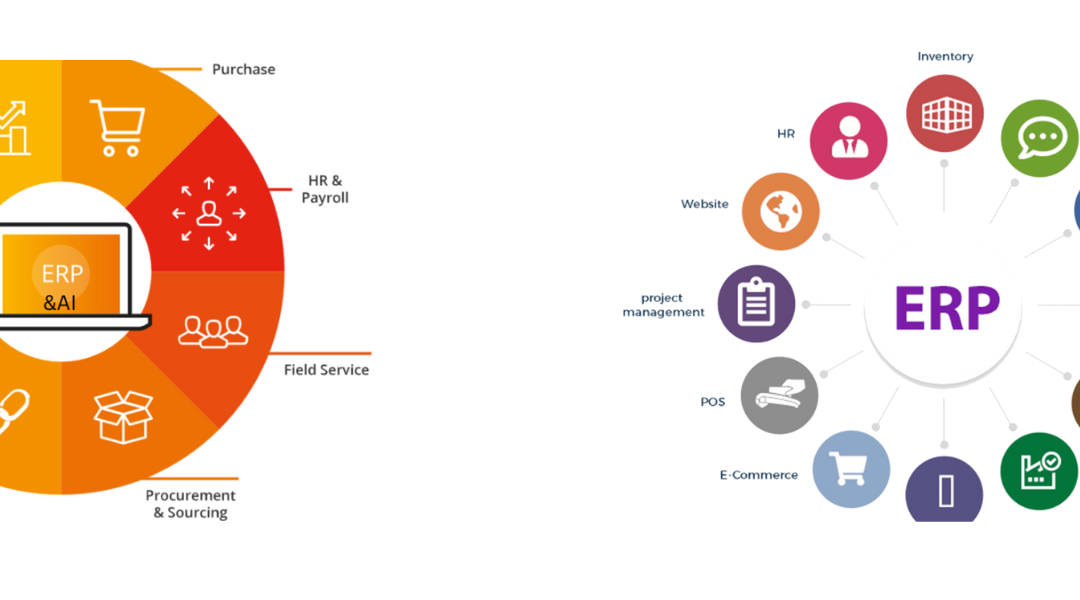
by ObiTechie's Team | Apr 18, 2023 | ERP Software
In the recent past, ERP systems have been evolving, and the advent of AI (artificial intelligence) has revolutionized and strengthened them further. With the help of AI, ERP systems can ease business operations and increase productivity, profitability, and efficiency.
The Basics of AI and ERP Systems
According to Britannica, AI (artificial intelligence) is the ability of a computer-controlled robot to execute tasks similar to those of humans. Although invented years ago, AI is now widely recognized as a valuable asset in the business world for optimizing digital processes. With AI, it is now possible for businesses to identify inaccurate or incomplete data, analyse them, and provide reliable insights within seconds; this has enabled companies to make accurate, informed decisions.
Humans invented Artificial intelligence (AI), and it has become a highly sought-after asset for businesses, particularly in ERP systems.
AI is considered one of the most profound discoveries, even more than most human discoveries. Much research has shown that over 40% of large companies in any sector use artificial intelligence to develop and implement their business strategies. Furthermore, over 83% of the companies that prioritized technology use AI-related solutions for their business operations.
AI is the future of the economy. Unquestionably, it is any business with an upper hand against its competitors. AI is versatile enough to assist you whether you are considering the system for market research, business development, business scope, digital marketing, or any other business strategy. The following are different ways artificial intelligence influences ERP systems.
Enhanced Data Management
By combining ERP systems and AI, businesses can now automate workflows. Besides, they can save time by eliminating unnecessary human interactions when uploading information, improving operational effectiveness.
AI-supported ERP system also creates a master information database that is accessible anytime. The database is a significant element of an organization’s data.
Improved Customer Experience
Conversational AI has helped businesses improve customer experience. The AI ensures real-time support and customized recommendations for each customer. AI options such as voice assistants and chatbots can help customers place orders, resolve orders, track shipments, and improve customer loyalty and satisfaction.
Automation of Repetitive Tasks
In all businesses, some tasks are common and repetitive. Such everyday jobs can be automated and aligned by integrating machine learning instead of employing an additional human. AI systems can help you automate routine tasks. Additionally, they can help you save time and other resources. With AI systems embedded with ERP, businesses will focus more on high-priority areas and not dwell on simple repetitive tasks.
Predictive Maintenance
Integrating AI into your ERP systems will help you use volumes of stored data to anticipate any potential challenges before they occur. In addition, you will address the issues before they cause huge losses and cause breakdowns of your systems, business processes, and operations.
Improved Supply Chain Management
Integrating artificial intelligence in ERPs will help you find new patterns in your supply chain data. The data will help you identify areas that need improvement and find solutions. Such cases could be in product planning, demand forecasting, supply quality, transport management, and others that may affect the profitability of your business.
Challenges of Implementing AI in ERP Systems
Rolling out any technology comes with challenges. Some of the challenges that come with implementing AI in ERP systems include
- Low-quality or insufficient data
- High implementation costs
- Lack of artificial intelligence talent
Future of AI in ERP Systems
AI in ERPs is changing the way businesses operate. The systems empower businesses to optimize operations, improve customer experience, and, more importantly, help them make data-driven decisions.
AI technology has already significantly impacted various industries, and its effect is likely to grow even more. The most recent technologies in business, such as chatbots, research and presentation AI, and others, have greatly benefited businesses.
Investing in AI can help businesses discover valuable insights from their existing data to help make informed decisions. Comprehensively, AI in ERP is a game changer. If you consider improving the efficiency of your business operations and reducing operational costs for more profit, integrating AI in your ERPs is the way.






